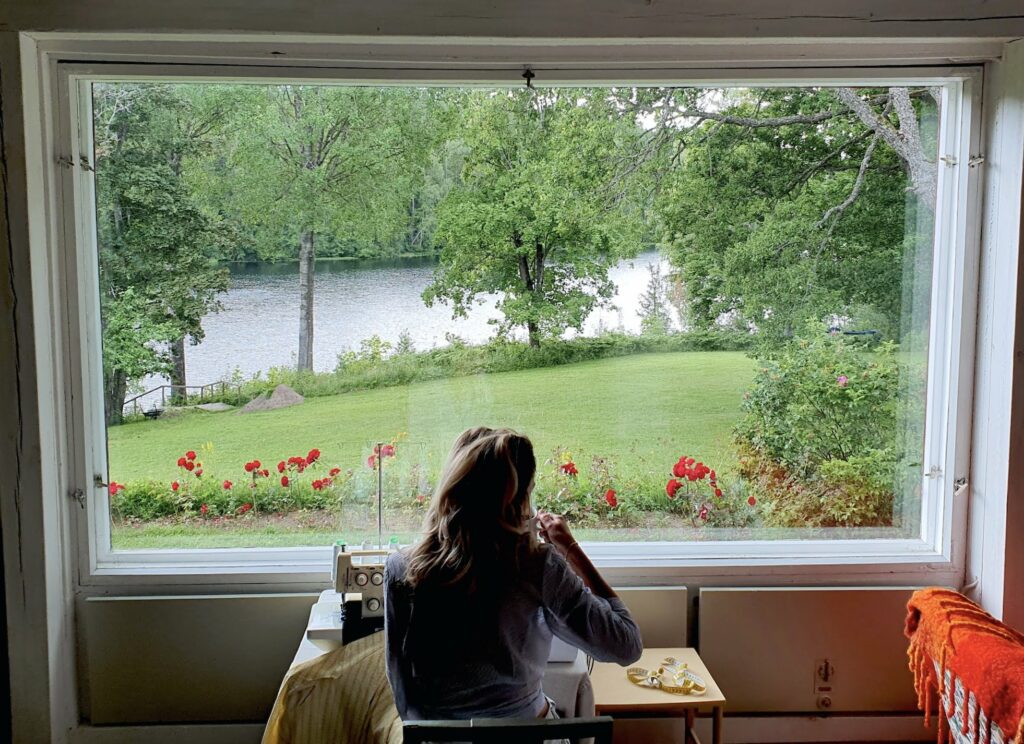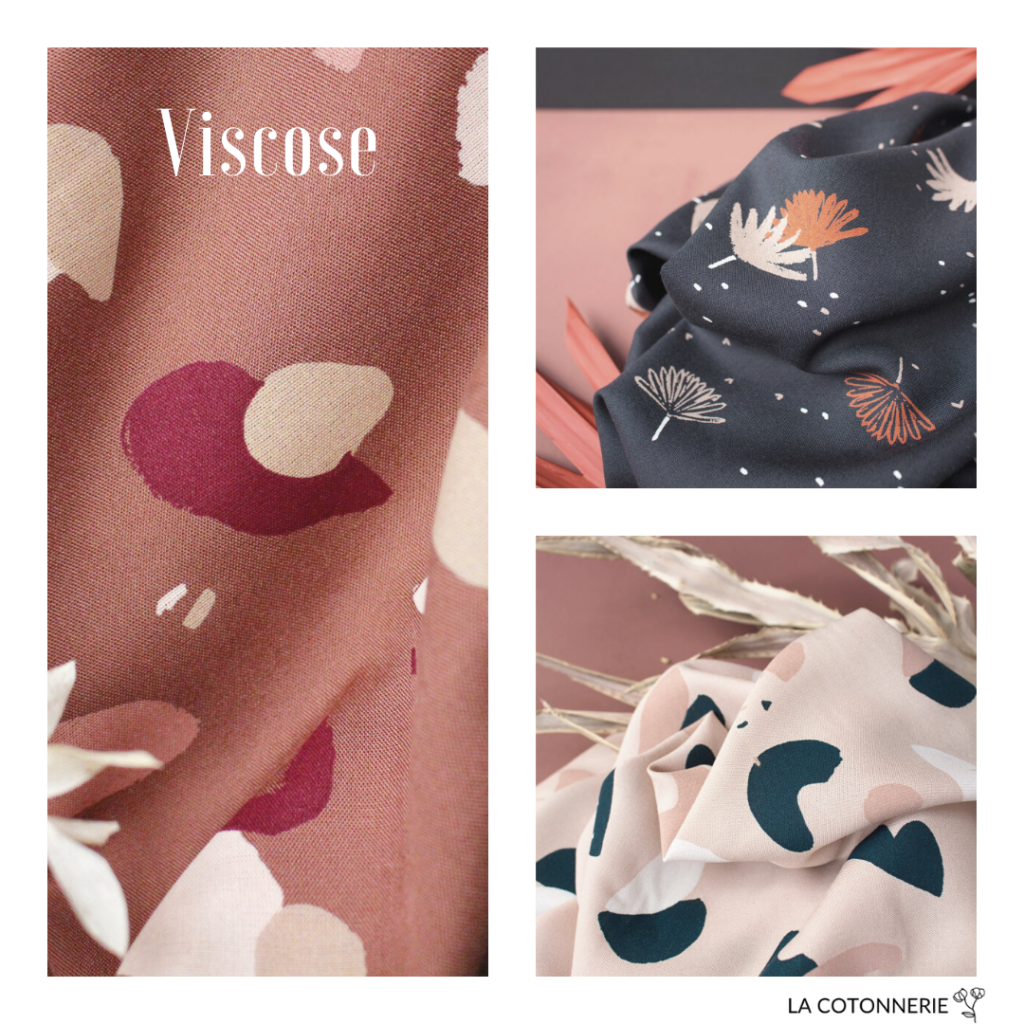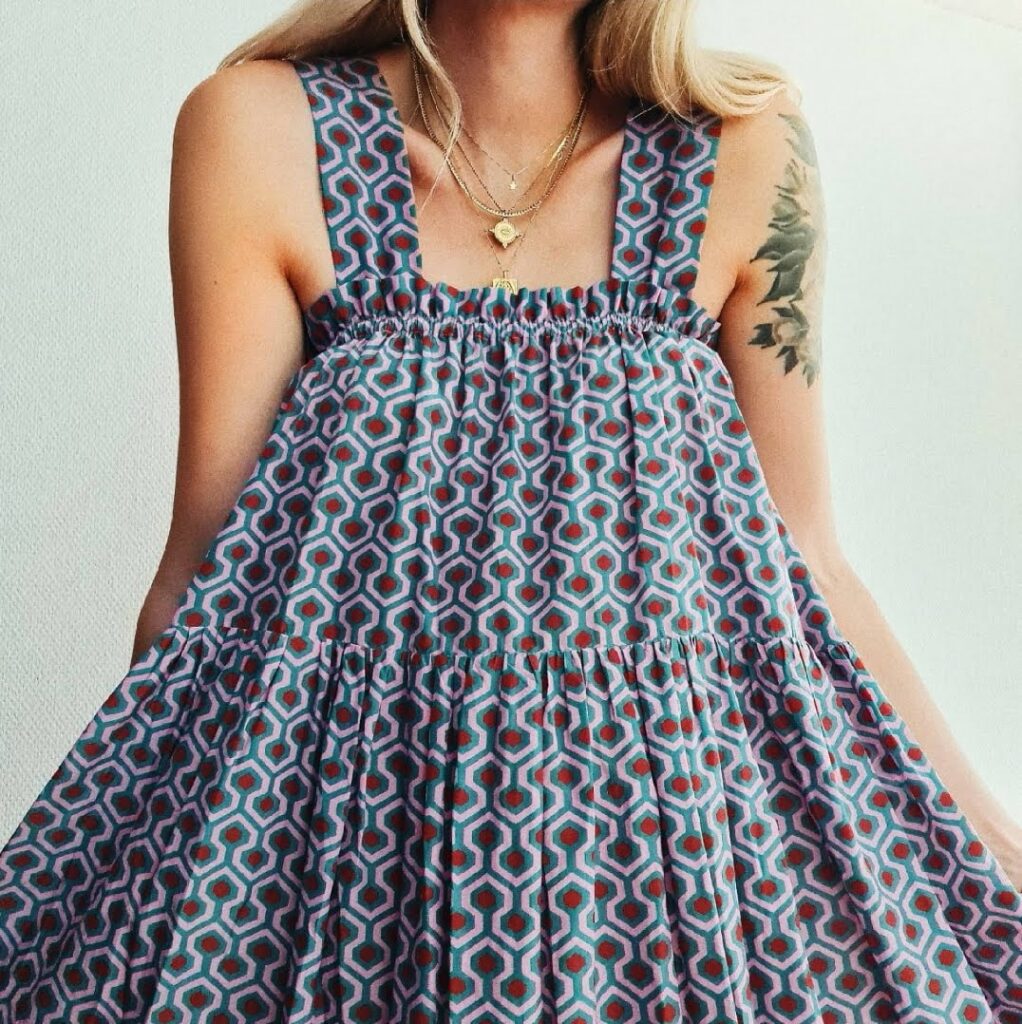Few weeks ago, we met with Julia, a talented freestyle-seamstress who runs a successful blog called Contour Affair as well as an Instagram Page with over 13K followers. From how she started sewing and self-drafting her patterns to her thoughts on sewing, fast fashion and upcycling, she invites us to an enlightening discussion.
Julia’s presentation
Can you introduce yourself shortly?

My name is Julia, I have been in Dubai for seven years and I am originally from Finland. I would consider myself first and foremost as a seamstress, designer and a maker. But my day job (which finances my sewing passion) is in technology.
How did you start sewing? What brought you to this?
I can’t even remember when I started, I’ve been sewing all my life. My mom used to always sew, maybe in a more “structured” way than me. My approach is based on self-drafting. I’ve only used a pattern once in my life. When I was younger, I used to modify my existing garments or buy vintage clothes and alter them to my size. And then, slowly, I started looking into how clothes are constructed and taking them apart. That’s how it started for me.
I’ve never taken a course or read a single book about sewing. The only source that I sometimes used was YouTube, back when I was learning to sew different types of zippers for instance. I just experiment and try different things. I’m sure I could have learnt faster by taking classes – I’ve done it in a more stubborn way. I definitely learn by doing. I could read all the books of the world but until I’ve done it myself, it doesn’t stick.

Tell us about your blog Contour Affair. How did you start a sewing blog?
When I started my blog, I was still very much a beginner. I wanted to start a catalog of my own projects that I would be able to look back on, and see my progress. That was my initial motivation, and it does make me proud to look back and realize how much I’ve learnt.
Over time, my blog started to grow an audience, and today it gets quite heavy traffic daily. It has also grown towards a different direction; a useful resource for lots of people. I get messages from the other side of the world, saying they started sewing after being inspired by my tutorials. I find it incredible that someone, thousands of miles away, discovers my guides, and uses them to start their own sewing journey. That makes me incredibly happy.
Looking for quality fabrics: visit our store

My tutorials are usually for a wide range of sizes. Most of the styles that I make are semi loose-fitting. I also have a label under which I sell made-to-order pieces, similarly with a flexible size philosophy. It’s important for me that my designs are flattering for different body types, and that they are still wearable through changes to your body (e.g. pregnancy or weight loss/gain). One of the biggest issues with fast fashion is that clothes are purchased with a short-term lifecycle, as opposed to having a long-term function.
You create your own patterns but you never studied pattern making, design or anything related. How difficult was it from a technical perspective to learn pattern making?
I messed up a lot and I still do! I imagine the finished piece and visualize my way through the construction. I’m definitely a highly visual person – even back in school, although I wasn’t a big fan of math, I loved geometry. I would see the shapes change from 3D to 2D in my mind, and sewing is really all about this; you start from 2-dimensional pieces to create shapes and curves, and for some reason it was easy to me. But don’t think for a moment that I don’t make mistakes. Once I sewed a skirt and I completely forgot that I had a bottom. The moment when I tried to close the zipper was just hilarious. All my mistakes have been valuable learning opportunities, and that’s how I’ve grown.

I don’t use any tools for drafting. I don’t even have a curved ruler. Most of the time I draft directly on the fabric, skipping patterns entirely. If I’m sewing something over and over, I will make a rough pattern to replicate, but most of the time, I literally just draw on the fabric.
This year, I used a pattern for the first time ever and I found it very intimidating at the beginning. It was an interesting experience, and turned out, incredibly easy – as long as you follow the instructions, you know the project will be a success. Whereas with my rogue ways, the risk is always present until the end.
Her sewing philosophy
As we know, the fashion industry, with the fast fashion, is one of the most polluting industries. You, on the contrary, promote slow fashion and upcycling. Could you talk us through your philosophy and how exactly you approach this way of sewing?
I think sustainability definitely is one of my main motivations for sewing today. However, I’ll be the first to admit that this wasn’t always the case. At the start of my sewing journey I was not a very enlightened sewist. I used to go on Pinterest and find things I liked, and obsessed by my ability to re-create them, I would sew things I didn’t always need. My approach is very different now. Whatever I feel like making, I ask myself if it’s wearable for where I am in my life. Right now, as a mother of a toddler, I am looking for comfort and practicality. I think about washability (because my clothes will be dirty within 2 hours), ease of care, versatility… over trends.

I prioritize natural materials; I don’t buy polyester – unless present in secondhand fabrics or through vintage clothing that I am remaking. Thoughtful fabric sourcing is key for sewing in a sustainable way.
I think the biggest challenge is how we approach fashion in general. How we take care of our existing clothes, how we choose what we are making or buying. When I think of sewing something, I imagine myself in an expensive store, seeing the garment I want to make, asking myself if I’d pay good money to have it. If not, I don’t make it. What I create has to be something I see myself wearing for years, and in which I’m willing to invest time. I think this mindfulness is as important as material choices.
Sewing is a great way to minimize your part in the fast fashion machine, but are we sometimes using our sewing power simply to create our own fast fashion? This was a question a sewing friend posted a couple years back, and it really lodged itself in my brain. Social media encourages you to keep posting, to stay relevant. It obviously defies the purpose of slow fashion, if this social pressure leads you to make more clothes just to generate creative content. I’m happy to see more and more dialogue about this within the sewing community, and I love the fact that these days, re-working old makes and styling existing clothes are also a focus.

I am not a fan of excess in any area of my life, including my wardrobe. When I start noticing my closet filling up with makes, I stop myself from sewing more clothes until I donate other items away. I think I have grown regarding my sewing. I may sew less than before, but it’s a more thoughtful process now.
I am also trying to find the balance between being a parent and sewing – a very different reality compared to my prior endless sewing freedom. My new priorities demand that I think hard about what to create; I want to use my time in a valuable way and make something that matters.
Part 2 coming soon…
You can follow Julia’s sewing journey on her Instagram account @contour_affair and don’t hesitate to have a look at her blog, you will find a lot of tips and tutorials: www.contouraffair.com!






